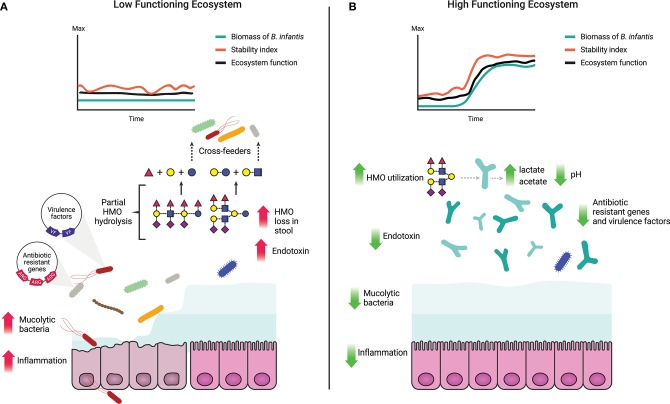Figure 3.
Characteristics of a high and a low functioning infant gut microbiome based on delivery of ecosystem services. (A) A low functioning infant gut microbiome ecosystem where the resources (HMOs) are inefficiently utilized leading to their loss in the stool (17) and potential cross-feeding to non-adapted opportunistic taxa. Prevalence of non-adapted opportunistic taxa leads to loss of ecosystem stability and decreased ecosystem function along with increased abundance of virulence factors and antibiotic resistance genes (82, 84, 85). Overgrowth of mucus-degrading bacteria and elevated levels of endotoxin compromise the intestinal barrier leading to chronic enteric inflammation and/or increased susceptibility to bacterial translocation (5, 89, 90). (B) A high functioning gut microbiome where ecosystem functions and stability are maintained over time, corollary to an increase in biomass of B. infantis. HMOs are efficiently utilized by B. infantis and converted into cell biomass, organic and SCFA. Production of organic and SCFA reduces the luminal pH (17) creating an unfavorable environment for opportunistic taxa, including virulent, antibiotic resistant, and mucolytic bacteria.

